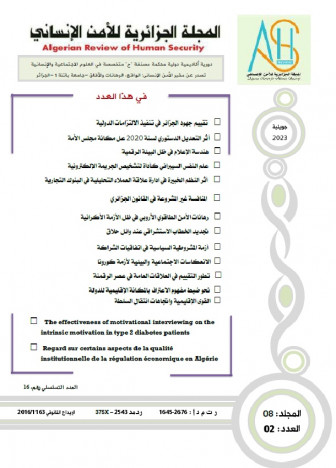The level of psychological burnout among the civil protection staff - A field study in the civil protection unit of Souk Naamane
DOI:
https://doi.org/10.59791/arhs.v7i2.1611Keywords:
Burnout, civil protection, emotional exhaustion, dulling of feelings, feeling of low personal achievementAbstract
The aim of this research was to study the level of psychological burnout among civil protection personnel, and to find out the extent of the difference in the level of psychological burnout (with its three dimensions: emotional exhaustion, dulling of feelings, feeling of low personal achievement) among the sample members, and is this difference attributed to the variables of age, status Social, and seniority at work? In this study, the researchers relied on the descriptive method. The study sample consisted of 46 elements of the civil protection elements working in the secondary unit of Souk Naamane. The study concluded that the level of psychological burnout (after emotional exhaustion) is high for civil protection personnel, while the level of psychological burnout (after dulling of feelings and feeling low in personal achievement) is medium for both. The research also concluded that there are no statistically significant differences in the level of psychological burnout (in its three dimensions: emotional exhaustion, dulling of feelings, feeling of low personal achievement) among the civil protection personnel due to the variables of (age, and social status), while there are statistically significant differences in the level of psychological burnout (with its three dimensions: emotional exhaustion, dulling of feelings, feeling of low personal achievement) among civil protection personnel due to the variable of (seniority at work).




